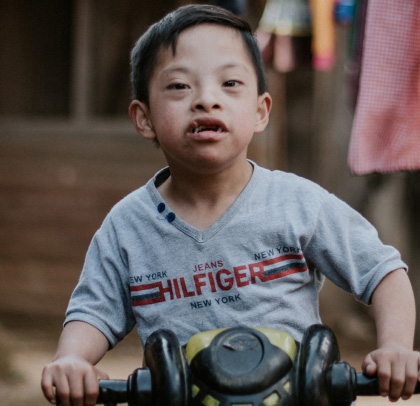Four Ways to Safeguard Your Kids from Predators Online
Hello June 3rd, 2024
Share This Story

In the United States, a majority of child abductions happen by people they know, not by strangers in white vans offering “free candy.” In fact, child abductions by strangers represent less than 1% of missing children cases. The most common types of abductions today start online, according to the National Center for Missing & Exploited Children.
In online exploitation scenarios, predators usually pretend to be someone in the same age group and use tactics such as a fake photo on their profile and common interests to gain the trust of their victims. A vulnerable child can easily be targeted and deceived into forming a relationship with the perpetrator through a process called “grooming.” Over time, this can escalate to the child meeting them in person and, in some cases, agreeing to run away with them.
There are an estimated 500,000 online predators active each day, according to the Federal Bureau of Investigation. The FBI says children between the ages of 12 and 15 are especially susceptible to being groomed or manipulated by adults they meet online.
"When our kids go missing, whether they started off meeting somebody online and they went with that person, or they left home and then met somebody...that's when trafficking happens," said Kevin Branzetti, Co-Founder and CEO of the National Child Protection Task Force (NCPTF). "Some of them are slowly coerced into it, some of them are quickly pushed into it, some are physically forced into it. It's all a scam in the end. A farce to get them to become trafficked."
Branzetti helped start NCPTF, which is a rapid-response task force locating missing children, identifying predators, and fortifying law enforcement’s ability to tackle complex crimes against society’s most vulnerable, our children. But, he says you don’t have to be an expert...every person out there can help make a difference in this fight.
Four Ways to Keep Your Kids Safe Online
Below are four actions Branzetti says parents and caregivers can take right now to help prevent their children from ending up in a dangerous situation online.
1) Gather Around the Dinner Table Every Night: A face-to-face conversation with your children each night over a meal will help them open up about their day. By creating a space where children can talk about what they are experiencing at school, with their friends, and online offers a way for you to have these serious conversations.
2) Educate Your Child on Internet Safety: If you are allowing your children any access to the internet, then a conversation about safety is crucial. By making your children aware of the dangers online, you can arm them with the tools to navigate potential negative encounters. Read more about how predators use grooming to get to your children here.
3) Establish Guardrails for Technology Use: Just like we wouldn’t want our children to walk around in public and talk to strangers, we don’t want them interacting with people they don’t know online. It’s important to carry over the rules you establish in the physical world to their online activities. This can include limitations on when and where they use devices and who they talk to. You can use apps like Google Family Link to help establish digital ground rules.
4) Learn the Apps Your Children are Using: When your children download new apps, make sure you take a few minutes to explore and learn the app yourself. By doing this, you can learn about what safety features you need to turn on while your children are utilizing the app, but you can also take an interest in what they are playing and learning. This can be a way to continue an open dialogue about their online engagement and what interactions they are having with friends.
Sourced by our Ministry Partner: National Child Protection Task Force (NCPTF)






